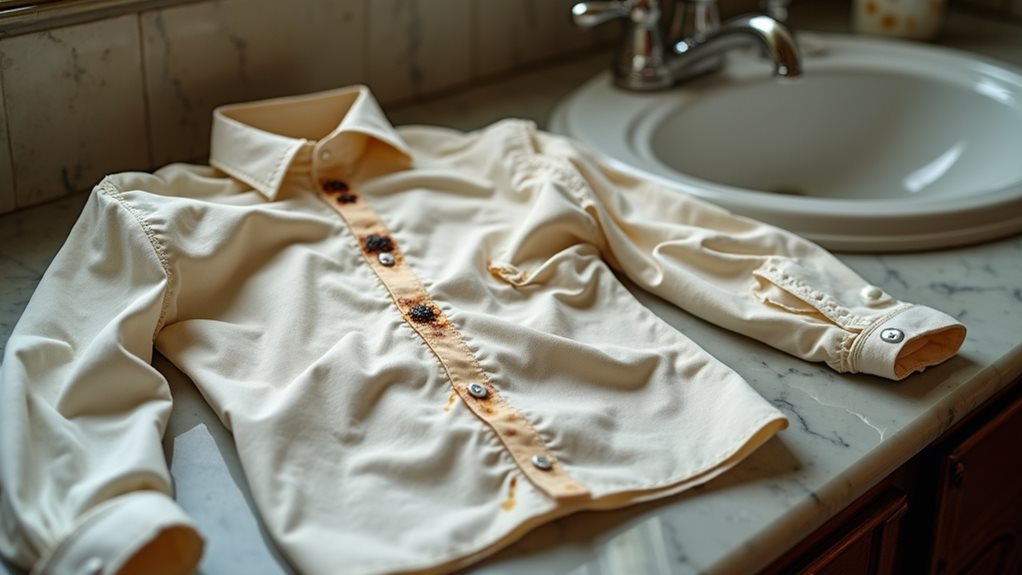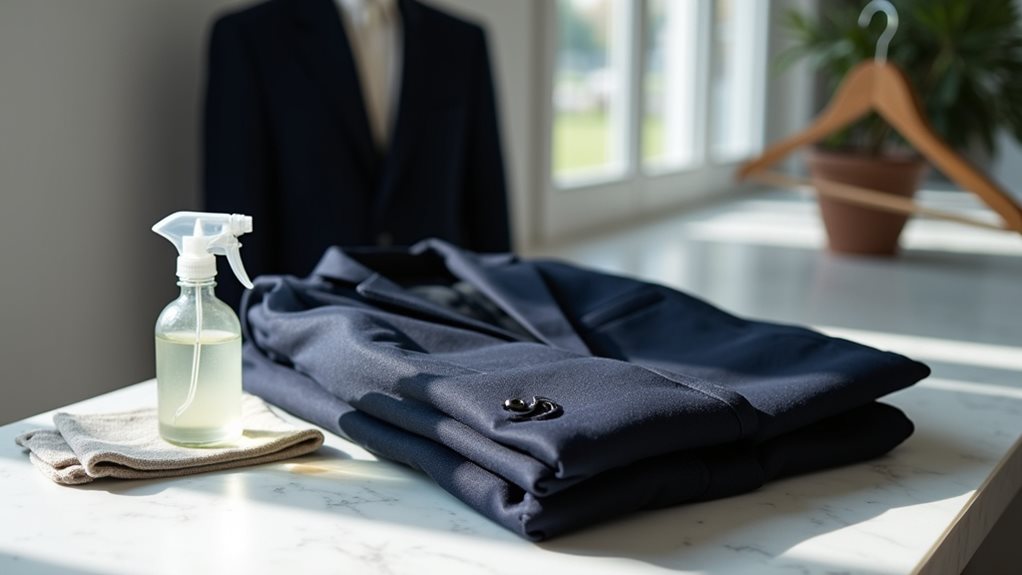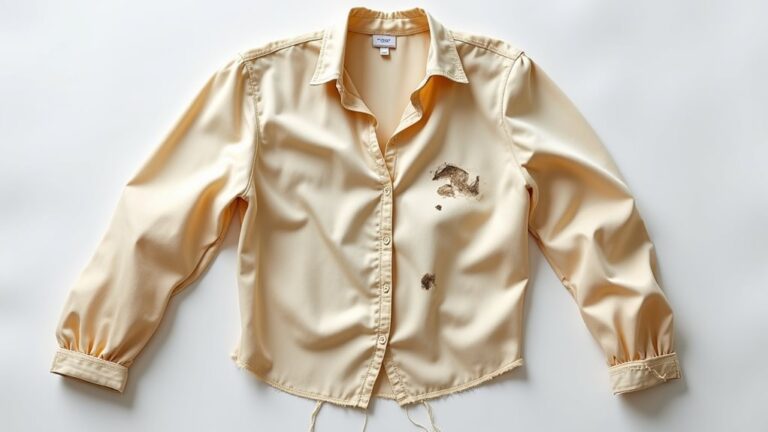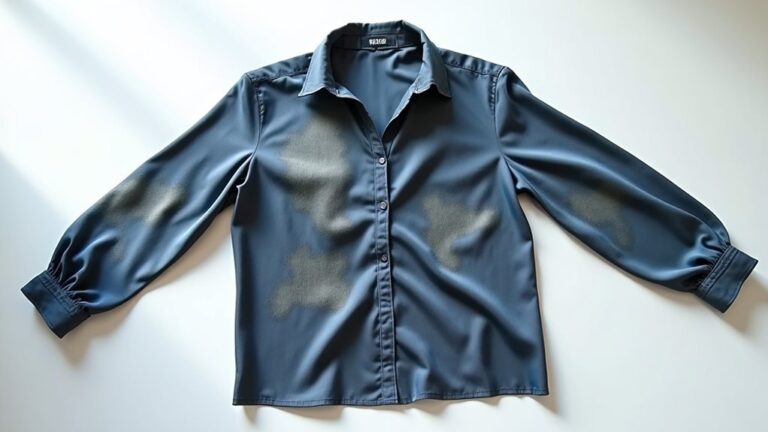You don’t need to wash clothes before dry cleaning, and honestly, attempting to pre-wash “dry clean only” items can actually damage delicate fabrics or set stains permanently into the fibers. Instead, focus on emptying pockets completely, marking any visible stains with tape or notes for your cleaner, and checking for loose buttons or existing damage. Professional dry cleaners use specialized solvents that work differently than home washing, so trust their expertise and prepare your garments thoughtfully to discover the best practices that’ll keep your favorite pieces looking pristine.
Understanding When Pre-Washing Is Necessary Before Dry Cleaning
Why do we always assume that more cleaning equals better results, when sometimes the opposite holds true? I learned this lesson the hard way when I pre-washed my grandmother’s vintage silk blouse before dry cleaning pickup, only to watch delicate beading fall apart in my washing machine 😅.
The truth is, you don’t need pre-washing for most “dry clean only” garments since professional cleaning handles dirt without water damage. However, visible stains require immediate attention—I always treat chocolate or wine spots beforehand so they don’t set permanently during processing.
Second-hand clothing also benefits from pre-washing to remove previous owners’ residual chemicals, but skip this step for embellished or ultra-delicate garments where your home washer might cause irreversible damage that professional clean methods easily avoid. Professional dry cleaners use specialized solvents that can effectively remove oils and odors that regular home washing simply cannot handle.
How to Properly Prepare Garments for the Dry Cleaning Process

Although rushing to the dry cleaner with an armload of wrinkled clothes feels like the obvious solution, taking ten minutes to properly prepare each garment can mean the difference between professional results and disappointing surprises.
Trust me, I’ve learned this lesson the hard way after retrieving a blazer with a forgotten pen that exploded during cleaning!
Start by emptying every pocket—coins, receipts, and lip balm can wreak havoc on your clothes.
Mark any stains with tape or notes, giving dry cleaners special instructions for targeted treatment.
Check each type of garment’s care label to guarantee it’s dry-clean safe, then inspect for loose buttons or existing damage.
Finally, lay garments flat in a protective bag to prevent additional wrinkles, keeping your garments looking pristine when you clean your clothes professionally.
Remember that dry cleaning uses specialized solvents that cannot be replicated with home washing methods, making professional cleaning essential for maintaining the quality and longevity of your delicate garments.
Common Mistakes That Can Damage Clothes Before Professional Cleaning

When I think about the costliest dry cleaning disasters I’ve witnessed, most stemmed from well-intentioned mistakes people made before their clothes ever reached the professional cleaner’s hands.
You’ll save yourself heartache by avoiding these common blunders that can ruin your favorite garments. Never attempt to handwash or machine wash items labeled “dry clean only” – I’ve seen too many shrunken blazers and distorted silk blouses from this mistake.
You’ll save yourself heartache by avoiding these common blunders that can ruin your favorite garments.
Don’t try to remove stains at home either, as household chemicals used can actually set them permanently, making professional cleaning nearly impossible.
Empty your pockets completely, check for loose buttons, and resist the urge to pre-treat anything. Water and agitation can cause irreversible damage to delicate materials like silk and wool that require the specialized solvents used in dry cleaning. The best way to clean expensive garments starts with proper preparation, not home remedies that backfire spectacularly.
What Dry Cleaners Need to Know About Your Garment’s Condition

Since communication makes the difference between flawless results and disappointing outcomes, I’ve learned that sharing your garment’s complete story with your dry cleaner transforms their ability to work magic on your clothes.
You’ll want to point out every stain, describing what caused it and when it happened, because different spills require specialized cleaning methods that your cleaner needs to select beforehand.
Don’t forget to mention missing buttons or loose threads, since they can fix these issues while your garment’s being dry cleaned.
Empty those pockets completely – I once left a pen that exploded everywhere! 😅
Also, share your garment condition history, including previous cleaning attempts, so they can choose the gentlest approach that preserves your favorite pieces perfectly.
This detailed communication is especially crucial for delicate fabrics like silk, wool, and items with intricate beading that require the most careful handling during the chemical solvent cleaning process.
Best Practices for Maintaining Fabric Quality During Preparation

Beyond communicating with your cleaner, protecting your garment’s integrity starts with smart preparation habits that I’ve developed through years of watching beautiful fabrics get damaged by simple oversights.
You’ll want to check those care labels religiously—I learned this the hard way when my favorite silk blouse came back looking like a sad, shrunken version of itself 😅.
Remove any lingering moisture or strong odors before your dry cleaning appointment, as these can react poorly with cleaning solvents and compromise fabric quality.
Moisture and odors can chemically react with dry cleaning solvents, potentially damaging your garment’s fibers and overall quality.
Mark visible stains clearly on your garment or write a detailed note describing them, which helps your cleaner choose the right treatment method.
While some items labeled “dry clean only” can actually be safely laundered at home using cold water and gentle cycles, certain fabrics like silk, wool, and structured garments should stick to professional cleaning to avoid damage.
This simple preparation protects delicate fibers while guaranteeing ideal cleaning results.




